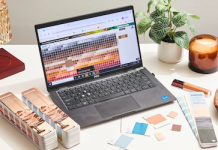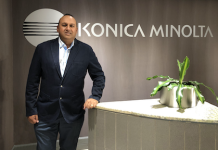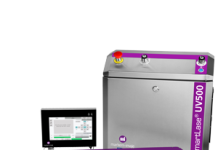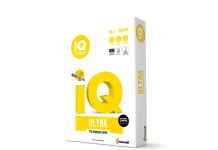As well as further increasing its use of renewable electricity for business, initiatives to expand the use of renewable electricity at production sites allows Ricoh, together with its stakeholders, to provide products with less environmental impact that accelerate the achievement of a zero-carbon society.
Ricoh recently announced that it has further expanded the use of electricity derived from renewable energy sources (hereinafter, renewable electricity) at production sites. This is part of its participation in RE100 (1) and a commitment to achieving the goal of using 100% renewable electricity across its business operations.
In November, Ricoh Thermal Media (Wuxi) Co., Ltd. (hereinafter, RTM), a production site in China, introduced a solar power generator operated under a PPA model (2). It has started to use electricity via a power generation company that is generated by the 2.8MW solar power generator installed on its rooftop. 20% of RTM’s annual electricity consumption will now be from renewable electricity.
Moreover, Ricoh UK Products Ltd., a production site in the UK, shifted the source of all the electricity used at its company’s facilities to renewable electricity. The initiatives undertaken at these two sites increased the use of renewable electricity by approximately 13.8GWh annually and is expected to reduce CO2 emissions by approximately 5000 tons.
As the first Japanese company to join RE100 in April 2017, Ricoh has undertaken numerous energy-saving and related initiatives. It has also installed in-house facilities to generate renewable electricity and has switched to electricity sources with higher proportions of renewable energy, accelerating its efforts across various sites.
The initiatives undertaken by the production sites, all company facilities for A3 MFP assembly facilities in China, Thailand and Japan, have all switched to renewable electricity this year. Moreover, 10 sales companies (3) in Europe have switched to 100% renewable electricity. As for Japanese domestic initiatives, the Gifu branch of Ricoh Japan, achieved the third-party Nearly ZEB (4) qualification through its comprehensive energy saving efforts and generation and utilisation of renewable electricity. They introduced a solar power generator and an electricity storage device. Ricoh plans to subsequently implement ZEB (5) at other new-build branches and sales sites across Japan in the future.
(1) RE100: A global initiative supported by companies agreeing to procure 100% of the electricity used for operations from renewable energy sources. Ricoh aims to source at least 30% renewable electricity by 2030 and switch to 100% renewable electricity by 2050.
(2) PPA model: Power Purchase Agreement is a type of contract between a power producer and an electricity consumer. Electricity generation facilities can be installed in spaces offered by an electricity consumer, such as its premises or rooftop.
(3) 10 sales companies in Europe: Ricoh Austria GmbH, Ricoh Deutschland GmbH, Ricoh Europe (Netherlands) B.V., Ricoh España S.L.U. Ricoh Europe SCM B.V., Ricoh International B.V., Ricoh Italia Srl., Ricoh Luxembourg PSF Sàrl, Ricoh Nederland B.V., Ricoh Sverige AB.
(4) Nearly ZEB: Nearly Net Zero Energy Building. A building conserving 75% or more of its energy, approaching zero energy consumption annually.
(5) ZEB: Net Zero Energy Building. A building achieving a significant reduction of energy consumption annually. There are three levels to achieve ZEB per conserving ratio against national criteria. ZEB (100% or more), Nearly ZEB (75% or more) and ZEB Ready (50% or more).
RICOH www.ricoh.com





















